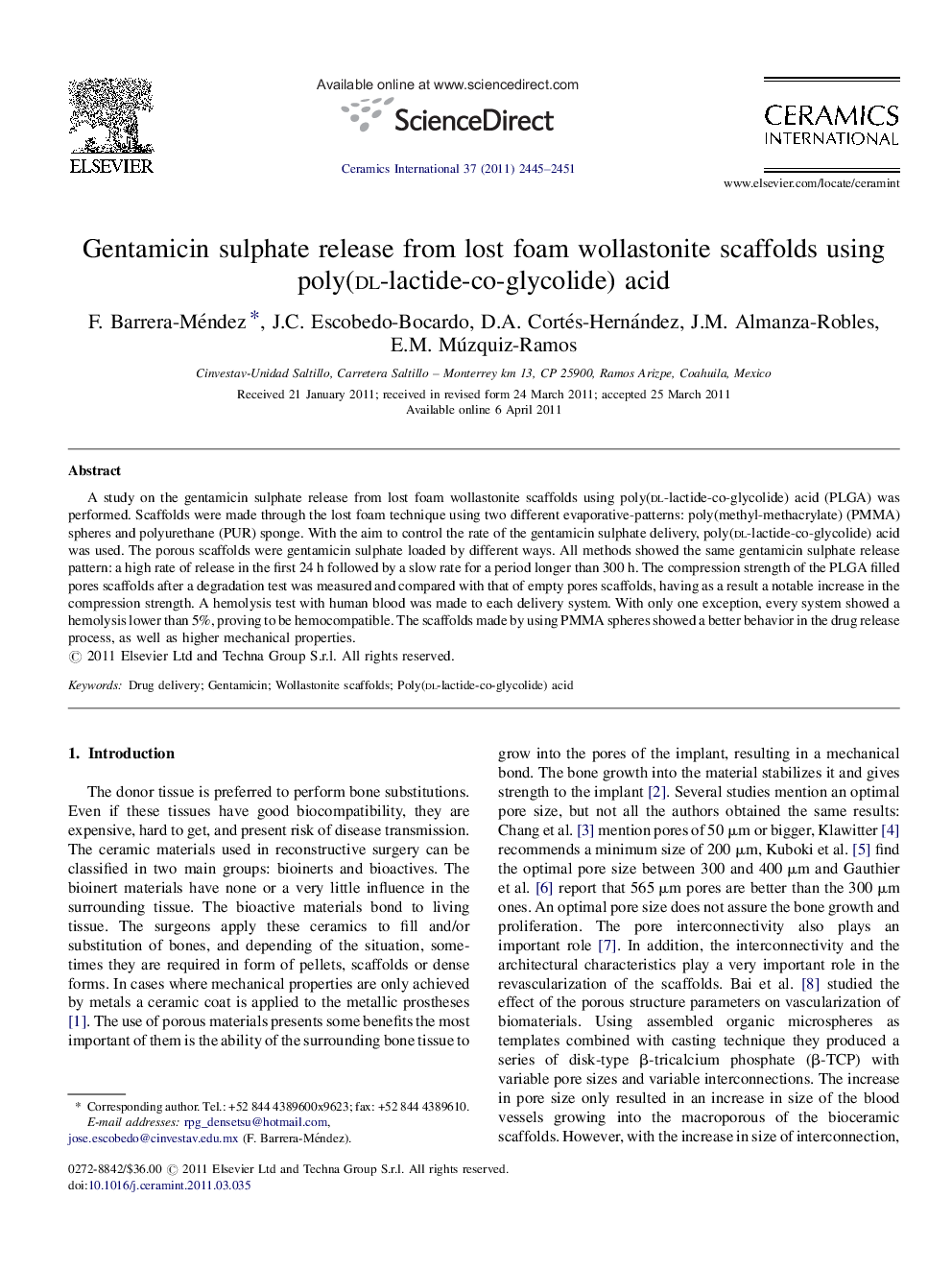| Article ID | Journal | Published Year | Pages | File Type |
|---|---|---|---|---|
| 1463225 | Ceramics International | 2011 | 7 Pages |
A study on the gentamicin sulphate release from lost foam wollastonite scaffolds using poly(dl-lactide-co-glycolide) acid (PLGA) was performed. Scaffolds were made through the lost foam technique using two different evaporative-patterns: poly(methyl-methacrylate) (PMMA) spheres and polyurethane (PUR) sponge. With the aim to control the rate of the gentamicin sulphate delivery, poly(dl-lactide-co-glycolide) acid was used. The porous scaffolds were gentamicin sulphate loaded by different ways. All methods showed the same gentamicin sulphate release pattern: a high rate of release in the first 24 h followed by a slow rate for a period longer than 300 h. The compression strength of the PLGA filled pores scaffolds after a degradation test was measured and compared with that of empty pores scaffolds, having as a result a notable increase in the compression strength. A hemolysis test with human blood was made to each delivery system. With only one exception, every system showed a hemolysis lower than 5%, proving to be hemocompatible. The scaffolds made by using PMMA spheres showed a better behavior in the drug release process, as well as higher mechanical properties.
